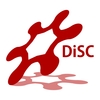Theoretical and computational chemistry
Molecular modeling; in silico characterization; molecular dynamics and reactivity; quantum and statistical methods; computational spectroscopy.
Listed here below you can check the groups developing this research area's activities.
Computational Chemistry & (bio)Catalysis
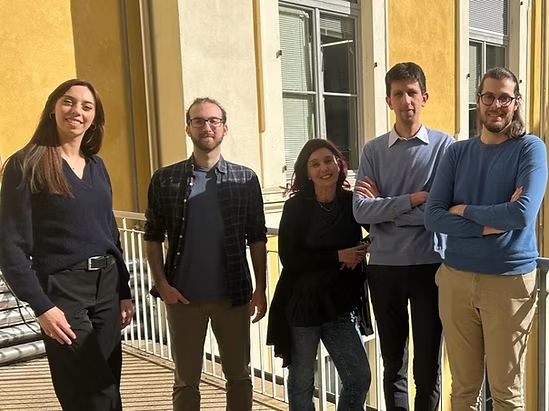
The research of the C 2 bC Group aims at elucidating central physical phenomena in chemistry rooted in the properties of atoms and molecules. A deep rationalization and interpretation of experimental evidence is pursued through improvement of the fundamental description of chemical systems (chemical theory), and the applications of mnew and existing techniques to chemical, physical and biological problems (chemical computation), with particular attention to health and sustainability.
Among the topics of interest, we investigate the mechanistic details of thiol-based proteins and chalcogen-based biomimics and drugs, the structural and reactivity properties of transition metalcomplexes for application in catalysis as well as in medicine, mechanistic and energy features of elementary reactions important in chemistry and biochemistry, the detailed mechanisms of radical reactions involved in ROS scavenging processes. Multiscale protocols are tailored to the different problems ranging from accurate quantumchemistry methodologies to classic mechanics and dynamics, and, more recently, combined to machine learningstrategies.
The ultimate goal of our research is to predict the chemical properties of a chemical system in advance of the experiment, for a rational design of functional molecules and materials assisted by computer.
Selected publications include:
A. A. Madabeni, D. Tanini, A. Capperucci, L. Orian Untangling the catalytic importance of Se oxidation
state in organoselenium-mediated oxygen-transfer reactions: the conversion of aniline to
nitrobenzene Chem. Science online (2024)
B. D. Zeppilli, A. Madabeni, L. Sancineto, L. Bagnoli, C. Santi, L. Orian Role of Group 12 metals in the
reduction of H 2 O 2 by Santi’s reagent: a computational mechanistic investigation Inorg. Chem.
62(42), 17288-17298 (2023)
C. M. Dalla Tiezza, F. M. Bickelhaupt, L. Flohé, M. Maiorino, F. Ursini, L. Orian, A dual attack on the
peroxide bond. The common principle of peroxidatic cysteine or selenocysteine residues Redox Biol.
34, 101540 (2020).
D. M. Bortoli, M. Torsello, F. M. Bickelhaupt, L. Orian Role of the chalcogen (S, Se, Te) in the oxidation
mechanism of the glutathione peroxidase active site ChemPhysChem, 18, 2990-2998 (2017).
group website
Molecular Materials & Modeling
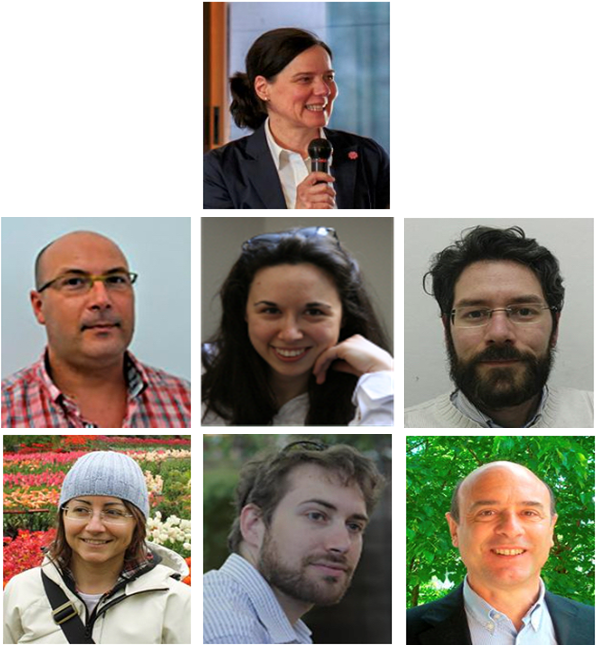
Lidia Armelao (lidia.armelao@unipd.it); Gregorio Bottaro (gregorio.bottaro@unipd.it); Silvia Carlotto (silvia.carlotto@unipd.it); Daniel Forrer (daniel.forrer@unipd.it); Marta Maria Natile (martamaria.natile@unipd.it); Marzio Rancan (marzio.rancan@unipd.it); Alessandro Soncini (alessandro.soncini@unipd.it); Andrea Vittadini (andrea.vittadini@unipd.it)
The Molecular Materials & Modeling (M3) Group is composed of researchers belonging to the Department of Chemical Sciences of the University of Padova and of the Institute for Condensed Matter Chemistry and Technologies for Energy (ICMATE) of the National Research Council (CNR). The group activity is currently focusing on the design, synthesis, characterization, and modeling of supramolecular structures and of nanocrystalline inorganic solids with applications in energy, nanomedicine, sensing, and catalysis. Innovative molecular systems and inorganic nanostructures are obtained through strategies of molecular self-assembly by exploiting non-covalent, selective, and directional interactions. All the systems are studied and characterized with advanced experimental techniques and computational methods.
- Adaptive helicity and chiral recognition in bright europium quadruple-stranded helicates induced by host-guest interaction. Cell Rep. Phys. Sci. 2022, 3, 100692.
- Chromium doped ZnGa2O4 thin films: an X-ray Absorption Near Edge Structure (XANES) and X-ray Excited Optical Luminesce (XEOL) study. Appl. Surf. Sci. 2022, 577, 151896.
- Spatial and temporal resolution of luminescence quenching in small up-conversion nanocrystals. ACS Appl. Mater. Interfaces 2022, 14, 11883−11894.
- Nature of the ligand-centered triplet state in Gd3+ β-diketonate complexes as revealed by time-resolved EPR spectroscopy and DFT calculations. Inorg. Chem. 2021, 60,15141−15150.
- Digging Ti interstitials at the r-TiO2 (110) surface: mechanism of porphyrin Ti sequestration by iminic N nucleophilic attack. Appl. Surf. Sci. 2021, 564, 150403.
- Luminescent thermometers: from a library of europium (III) β-diketonates to a general model for predicting the thermometric behavior of europium-based coordination systems. ChemPhotoChem 2020, 4, 674−684.
Updated April 26th, 2022
Molecular Recognition and Catalysis
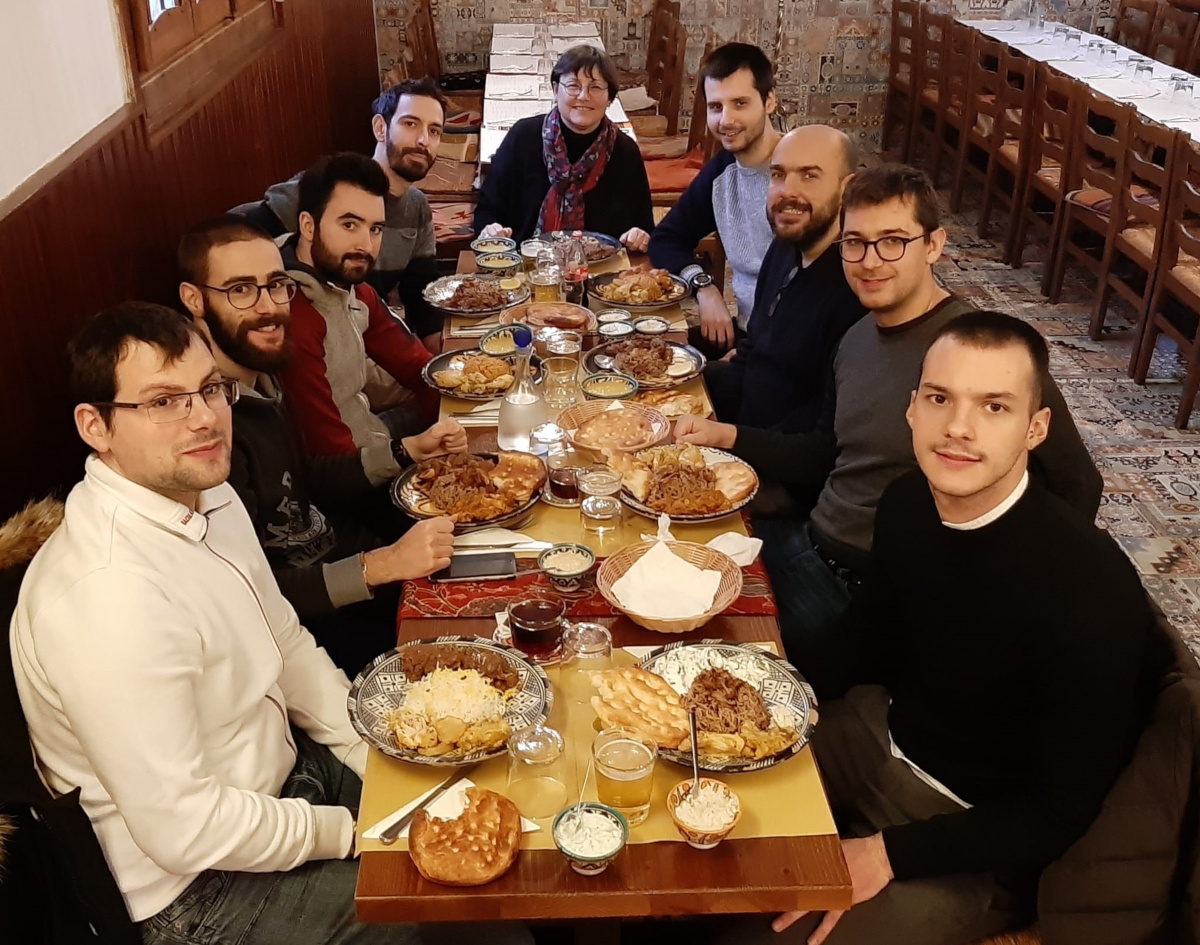
Giulia Licini (giulia.licini@unipd.it); Cristiano Zonta (cristiano.zonta@unipd.it); Manuel Orlandi ( manuel.orlandi@unipd.it).
The Molecular Recognition and Catalysis group is interested in all aspects of selective catalytic transformations and molecular recognition. Our research is centered on the design, discovery, and study of new catalytic systems that catalyze fundamentally useful organic reactions. These include, in particular Lewis Acid catalysis, oxidations, and new stereoselective transformations. In addition, we apply the tools of physical-organic chemistry tools to gain insights into the transition structure geometries and molecular recognition events that control reactivity and selectivity.
The following topics are currently under investigation in our laboratories:
1. Activation of Small Molecules (CO2, O2, H2O2); 2. Mimics of Physiologically Important Metallo-Enzymes (haloperoxidases, ligninperoxidases); 3. New Approaches to Catalyst Design and Recycling in Green Chemistry; 4. Self-Assembled Molecular Cages and Catalysis in Confined Spaces; 5. Probes for Enantiomeric Excess Determination; 6. Development of New Stereoselective C-C Bond Forming Reactions.
- Concentration-Independent Stereodynamic g-Probe for Chiroptical Enantiomeric Excess Determination, J. Am. Chem. Soc., 2017, 139, 15616–15619, DOI: 10.1021/jacs.7b09469.
- Triggering Assembly and Disassembly of a Supramolecular Cage, J. Am. Chem. Soc., 2017, 139, 6456–6460 DOI: 10.1021/jacs.7b02341.
- Vanadium(V) Catalysts with High Activity for the Coupling of Epoxides and CO2: Characterization of a Putative Catalytic Intermediate, ACS Catalysis, 2017, 7, 2367–2373, DOI: 10.1021/acscatal.7b00109.
– Efficient Vanadium-Catalyzed Aerobic C−C Bond Oxidative Cleavage of Vicinal Diols, Adv. Synth. Catal., 2018, 360, 3286-3296. DOI: 10.1002/adsc.201800050.
– A Diastereodynamic Probe Transducing Molecular Length into Chiroptical Readout, J. Am. Chem. Soc., 2019, 141, 11963-11969. DOI: 10.1021/jacs.9b04151.
Nanostructures & (Bio)molecules Modeling
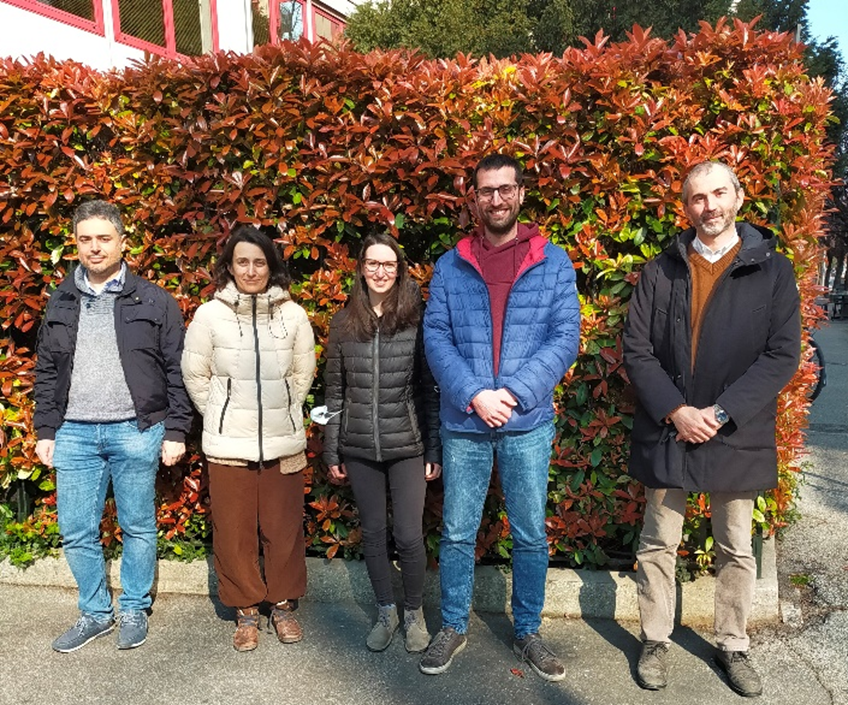
Stefano Corni (stefano.corni@unipd.it); Agostino Migliore (agostino.migliore@unipd.it)
The group develops and applies multiscale computational methods to describe hybrid systems, such as organic and biological molecules interacting with inorganic nanoparticles. The methods used range from ab initio atomistic calculations (also on quantum computers) and classical molecular dynamics to classical and quantum electrodynamics. The main research topics are:
-ultrafast spectroscopy and optical properties of molecules close to plasmonic nanostructures & in solution.
-the quantum nature of plasmonics excitations at the nanoscale.
-charge and energy transfer in (bio)molecules and in nanoscale structures
-the interactions of inorganic surfaces and nanoparticles with proteins.
The group is currently funded by EU H2020 and HE projects in which light-biomolecule interactions play a major role.
- Strong coupling between localized surface plasmons and molecules by coupled cluster theory, Nano Letters, 2021, 21, 6664-6670
- The physical origin of a photon-number parity effect in cavity quantum electrodynamics, Results in Physics, 2021, 30, 104690
- Charge transfer between [4Fe4S] proteins and DNA is unidirectional. Implications for biomolecular signaling, Chem, 2019, 5, 122-137
- Manipulating azobenzene photoisomerization through strong light–molecule coupling, Nature Communications, 2018, 9, 4688-9
- How to Identify Plasmons from the Optical Response of Nanostructures, ACS Nano, 2017, 11, 7321–7335.
Soft Matter Theory
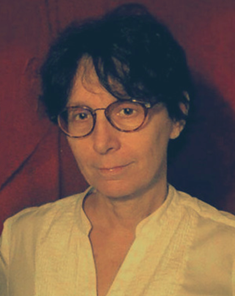
Prof. Alberta Ferrarini (alberta.ferrarini@unipd.it); Dr. Francesco Avanzini (francesco.avanzini@unipd.it)
We use and develop statistical mechanical theories and computer simulations to reach a microscopic understanding of equilibrium and nonequilibrium properties of Soft Matter. Different methods and techniques, suitable to bridge different time and length scales, are employed and developed to address questions of interest to biophysics and materials science.
Research topics:
- Chirality propagation across length scales in self-assembling systems (polymers, nucleic acids, supramolecular aggregates);
- Elastic, rheological and thermodynamic properties of soft matter systems (lipid membranes, liquid crystals, polyelectrolytes, colloids, emulsions and gels);
- Nonequilibrium chemical processes and self-organization at different scales.
Publications:
Modeling of minimal systems based on ATP-Zn coordination for chemically fueled self-assembly, Phys. Chem. Chem. Phys. 2023, 25, 6102.
Spontaneous twisting of achiral nematic rods, Phys. Rev. Lett. 2023, 130, 1.
Helical inclusions in phospholipid membranes: lipid adaptation and chiral order, J. Phys. Chem. Lett. 2019, 10, 5629.
Circuit Theory for Chemical Reaction Networks, Phys. Rev. X 2023, 13, 021041
Deficiency, Kinetic Invertibility, and Catalysis in Stochastic Chemical Reaction Networks, J. Chem. Phys. 2023, 158, 204108
updated September 26th, 2023
Supramolecular Nanochemistry and Advanced NMR
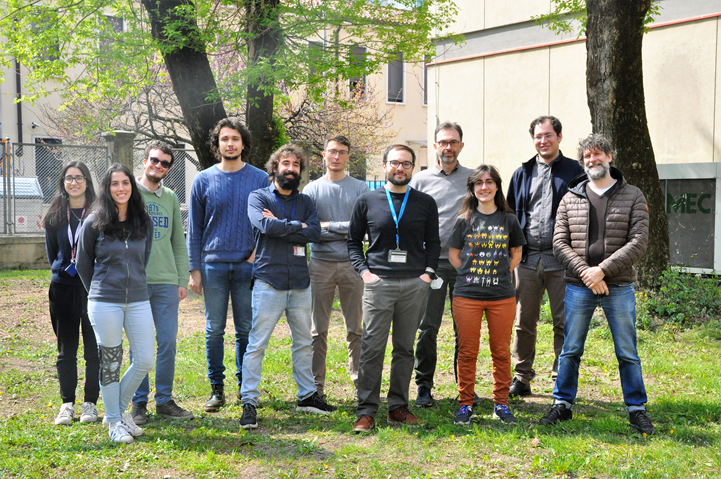
Fabrizio Mancin (fabrizio.mancin@unipd.it); Federico Rastrelli (federico.rastrelli@unipd.it)
The research activity of the group is focused on the development of self-organized nanosystems for molecular recognition and innovative NMR methods for their structural investigation. Monolayer-protected gold, silica and polylipoic nanoparticles are the key scaffolds of our systems. We demonstrated how self-organization of these nanoparticles can be exploited for cooperative catalysis, sensing and drug delivery. The most relevant application is the NMR detection of analytes: using tailor-made receptor nanoparticles and custom NMR sequences we demonstrated the possibility to extract the 1H spectrum of the target molecules from that of the whole mixture even at micromolar concentrations. Other fields explored include pH2 hyperpolarization, food analysis, the study of nano-bio interactions, photonic nanohybrids. The group is supported by EU (MSCA-ITN), CARIPARO, AIRC.
- “On the Metal-Aided Catalytic Mechanism for Phosphodiester Bond Cleavage Performed by Nanozymes” ACS Catalysis, 2021, 11, 8736-8748.
- “Hybrid nanoreceptors for high sensitivity detection of small molecules by NMR chemosensing” Chem. Commun. 2021, 57, 3002-3005.
- “Host-Guest Allosteric Control of an Artificial Phosphatase” J. Am. Chem. Soc., 2020, 142, 6837-6841.
- “Nanoparticle-assisted NMR spectroscopy: Enhanced detection of analytes by water mediated saturation transfer” J. Am. Chem. Soc., 2019, 141, 4870–4877.
- "Molecular-Dynamics-Simulation-Directed Rational Design of Nanoreceptors with Targeted Affinity" Angew. Chem.-Int. Edit., 2019, 58, 7702-7707.
Updated April 26th, 2022
Theoretical Chemistry

Prof. Antonino Polimeno (antonino.polimeno@unipd.it); Prof. Barbara Fresch (barbara.fresch@unipd.it); Dr. Diego Frezzato (diego.frezzato@unipd.it); Prof. Sergio Riampino (sergio.rampino@unipd.it); Prof. Mirco Zerbetto (mirco.zerbetto@unipd.it)
At TCG we develop theoretical models and computational simulations of molecular properties and reactivity. We address a wide range of physical chemistry topics, from magnetic and optical spectroscopies to the design of functional molecular structures using molecular dynamics, quantum-statistical and stochastic thermodynamics methods. We investigate also novel approaches, like machine learning techniques and quantum technologies, for theoretical and computational chemistry. Current research subjects are:
- coarse-grained description of biomolecules and supramolecular systems
- deterministic and stochastic kinetics in chemical reaction networks
- computer-guided rational design of bio inspired molecules and catalysts for applications to health and sustainability
- design of quantum nanodevices for molecular logic
- models of quantum dynamics and spectroscopic response
- Strategies to simulate dephasing-assisted quantum transport on digital quantum computers. New Journal of Physics 2022, 24, 023039.
- Effect of methylmercury binding on the peroxide reduction potential of cysteine and selenocysteine. Inorg. Chem. 2021, 60, 4646-4656.
- Stochastic modelling of C-13 NMR spin relaxation experiments in oligosaccharides. Molecules 2021, 26, 2418
- Sensitivity analysis of the reaction occurrence and recurrence times in steady-state biochemical networks. Math. Biosci. 2021, 333, 108518
- Parameter free evaluation of SN2 reaction rates for halide substitution in halometane. Phys. Chem. Chem. Phys. 2022, 24, 7474.
updated April 6th, 2022


